Incorporate dramatic plants in inky hues into your garden. Here are five stylish examples
YOU MIGHT ALSO LIKE: Growing bougainvilleas
ELEPHANT’S EAR (COLOCASIA ESCULENTA) ‘BLACK MAGIC’
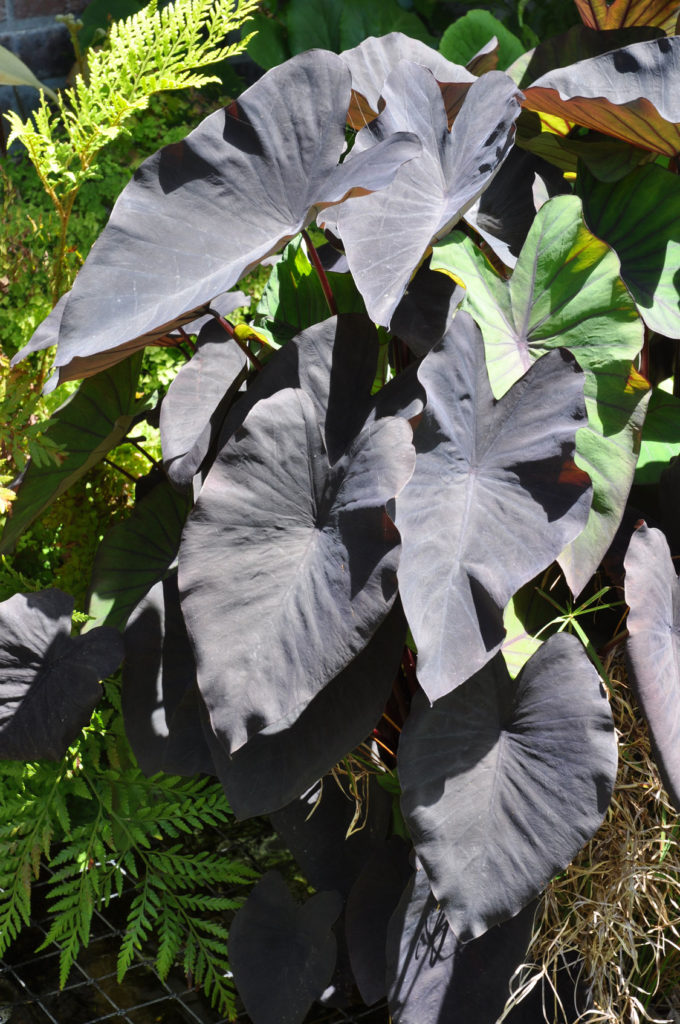
These tropical tuberous perennials grow to 1–1,5m high.
MAKE THE MOST OF THEM: ‘Black Magic’ looks spectacular in or near water features especially when set against a green backdrop or a tropical setting in borders or beds. Plant them in a container on an ultra-modern patio as standalone plants. Underplant with selaginella or gold acorus grass.
GROWING TIPS: These giants are waterholics and happily grow in semi-shade with their feet in the water. They’re best potted into large containers so they can be lifted when they need dividing or repotting. They’re intolerant of frost so lift the tubers in winter in cold areas.
KEEP READING: Growing perennials
BLACK VIOLAS
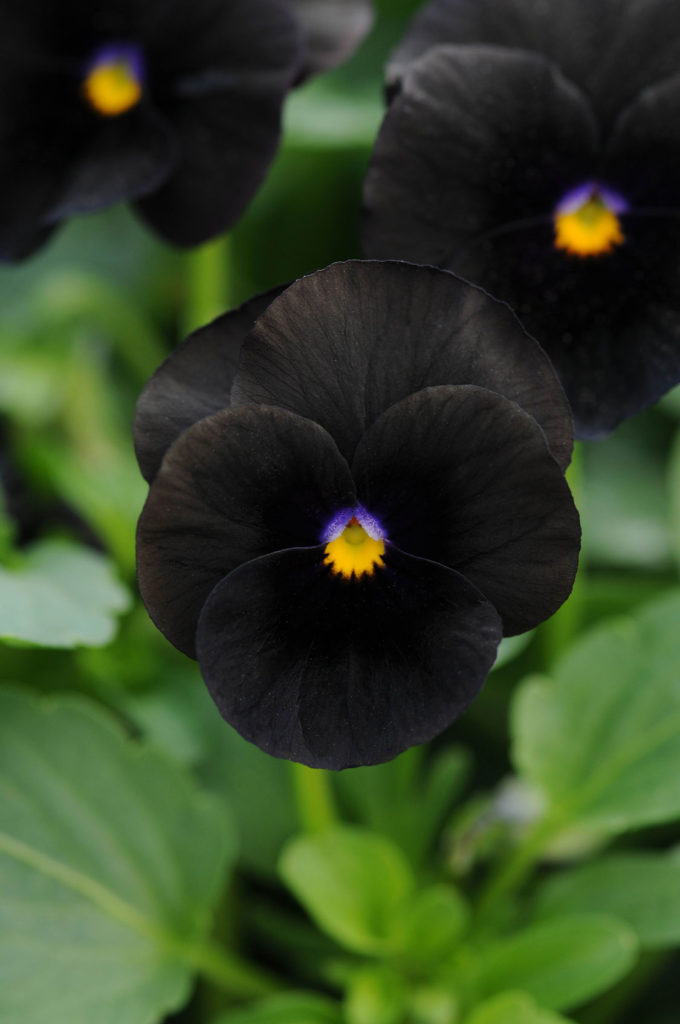
These delightful winter- and spring-flowering annuals come in such a deep purple that they look black. The best, Viola Sorbet ‘Black Delight’ (pictured) has velvety petals.
MAKE THE MOST OF THEM: Reaching a height of 15–20cm, they’re heat and cold tolerant if planted where they receive sun in winter and semi-shade in summer where they’ll flower through to November. They need winter sun to bring out their colour. Good companions include yellow pansies, calendulas and silvery-grey grasses like festuca.
GROWING TIPS: Plant them in well-composted fertile soil. Feed them twice a month with Seagro and nip out faded flowers to promote further flowering.
SWEET POTATO (IPOMOEA) ‘MIDNIGHT LACE’
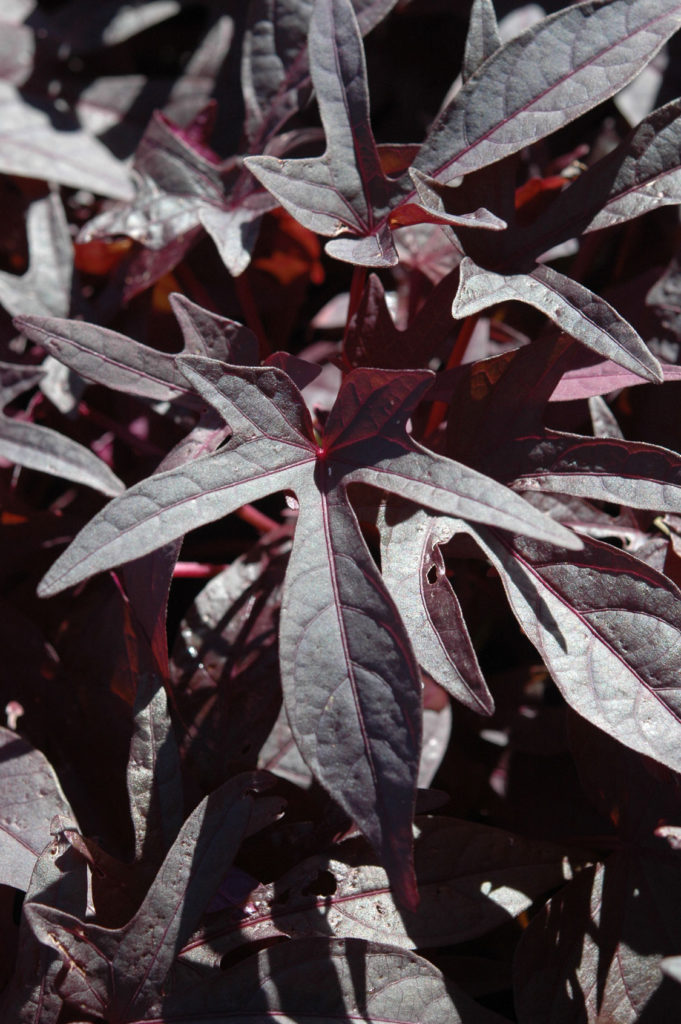
The generous palmate leaves of these tender tuberous perennials tumble out of containers and weave their way among other plants creating an eye-catching display. They grow to a height of 20cm and a spread of 40–50cm; they can also trail as much as 1m.
MAKE THE MOST OF THEM: They’re at their best cascading from hanging baskets, window boxes and containers. For a strong contrast, plant them with their lime green ‘Sweet Caroline’ cousins or silvery-foliaged plants like Plectranthus argentum.
Use them as a spreading summer groundcover in window boxes, beds and borders.
GROWING TIPS: They’re best in the sun in warm humid areas; in cooler regions use as them annuals. They thrive in good fertile soil enriched with compost. Keep them under control as they can swamp other plants. Protect them from cold and dry winds.
BLACK MONDO GRASS (OPHIOPOGON PLANISCAPUS)
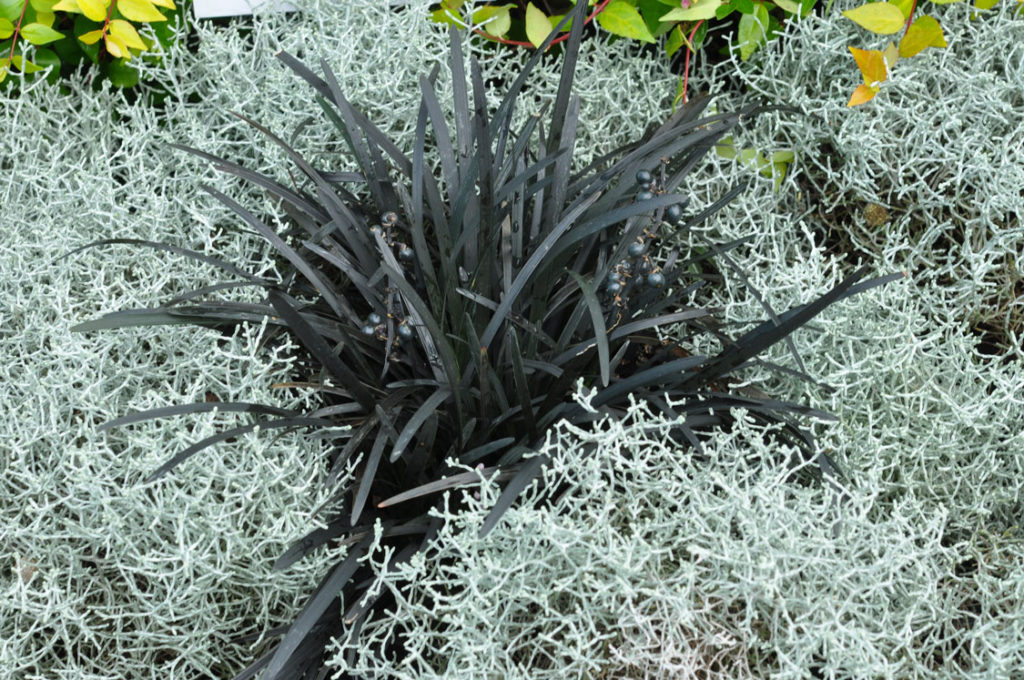
Black mondo grass may be small in size but it’s big on impact and its distinctive deep purple-black grass-like leaves look good all year round. Frost-hardy, its 20–30cm high spikes of dainty lilac flowers and glistening black fruits add interest in summer.
MAKE THE MOST OF IT: Use it in containers, between pavers, as a border or en masse as a low-maintenance groundcover either in sun where it will show up well or in shade to add depth to a planting. For a striking effect, team it with yellow or silver-leafed groundcovers like golden creeping jenny or cotton bush, Leucophyta brownii (pictured).
GROWING TIPS: It’s slow growing so buy the most mature plants you can find. Add compost generously, water regularly and feed with a high-nitrogen fertiliser.
ARUM LILY (ZANTEDESCHIA AETHIOPICA) ‘BLACK’
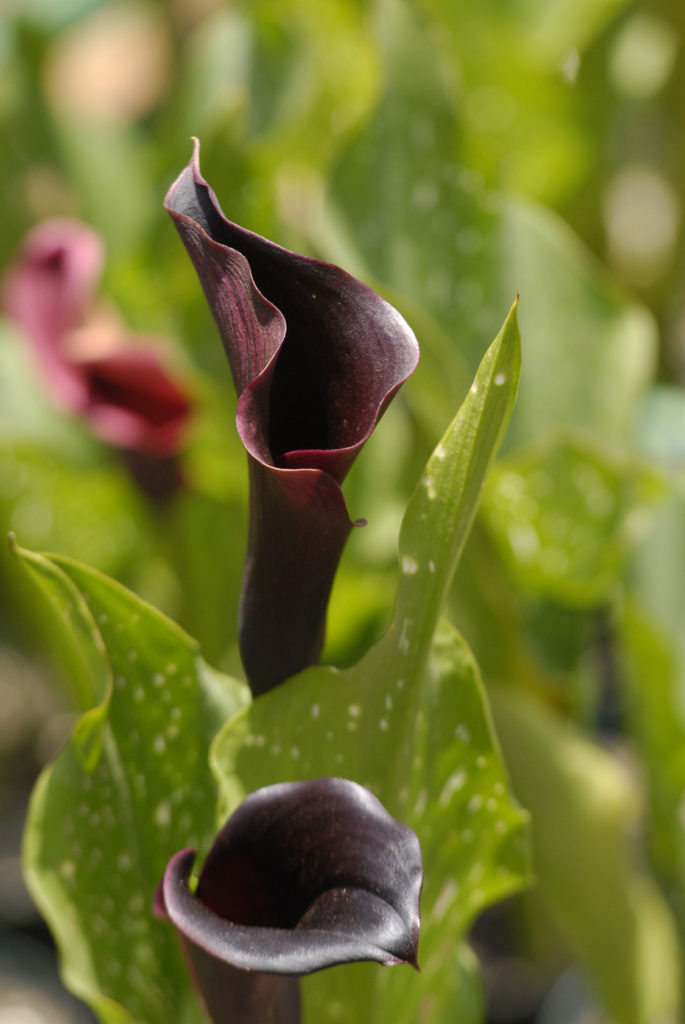
You’ll be charmed by the succession of sculptured flowers that emerge from the arrow-shaped leaves of these half-hardy indigenous bulbs which grow 30–40cm high. The flowers are such a deep burgundy that they appear black. They bloom from summer and into autumn.
MAKE THE MOST OF THEM: They’re perfect for pots, urns and in planters as stand-alone plants among other pots of plants with dark foliage like the dark eucomis (pineapple flower). They’re also good in the border with other bulbs and perennials like Phygelius aequalis ‘Yellow Trumpet’ or for a more natural look, grasses.
GROWING TIPS: Plant rhizomes in early spring in rich, free-draining, well-composted soil. Keep them moist but not wet. Encourage repeat flowering by feeding monthly with Nitrosol or Multifeed (P). Reduce watering when the leaves start yellowing, then mark their position. Repot or top dress with compost.
